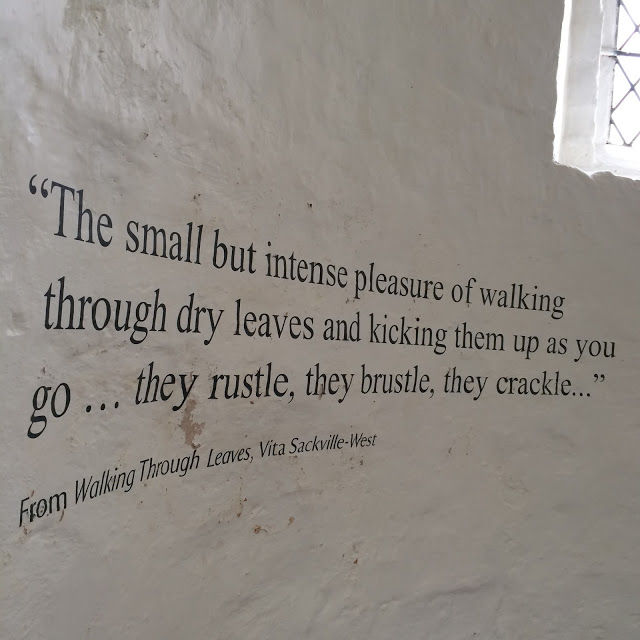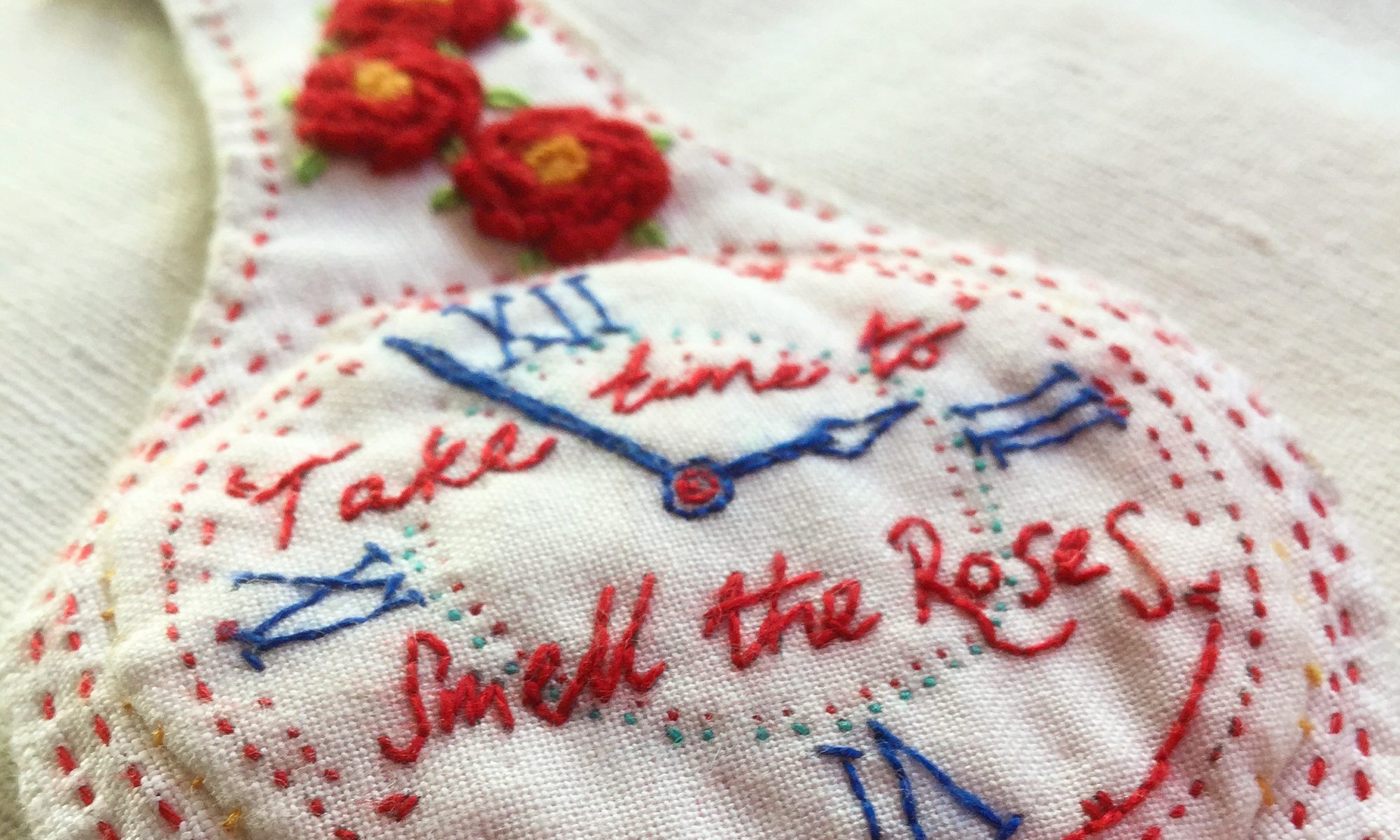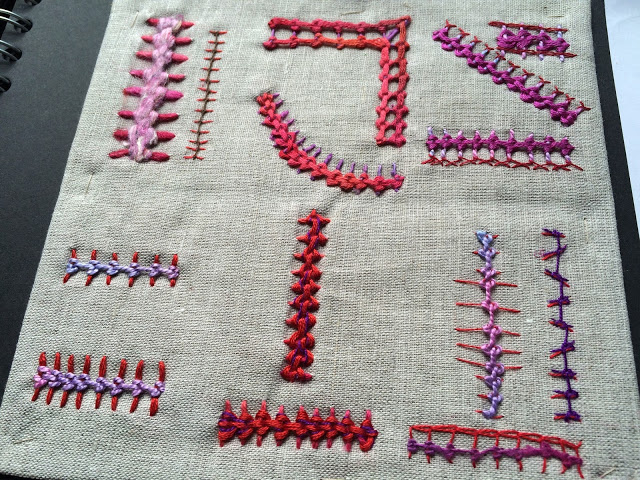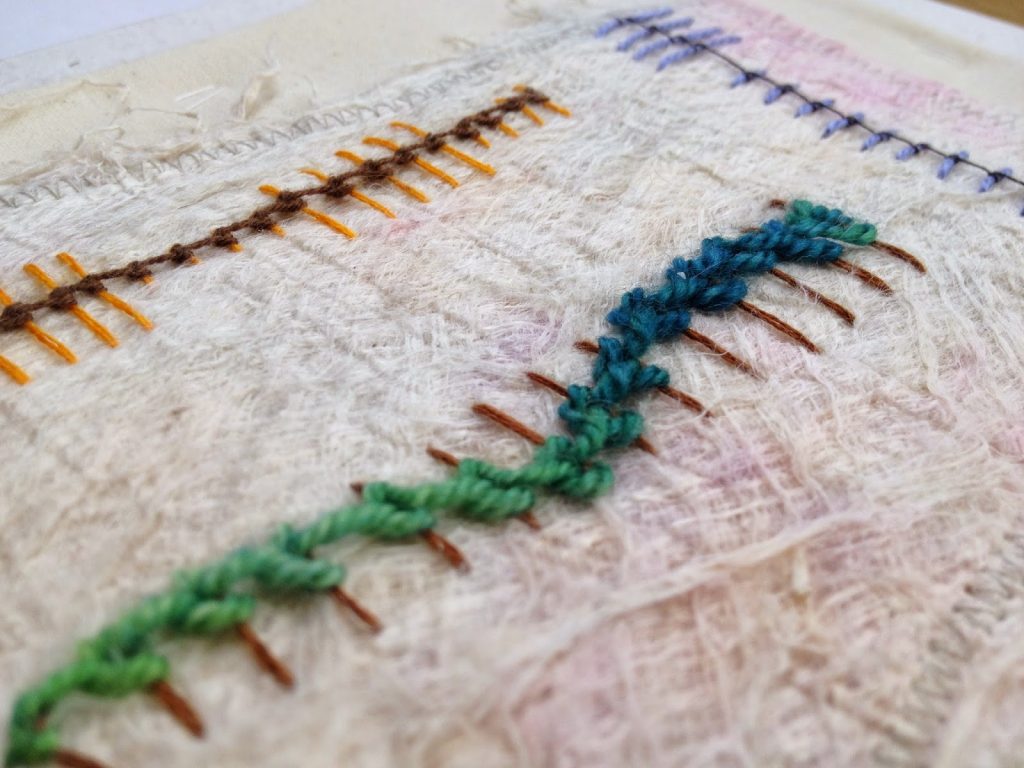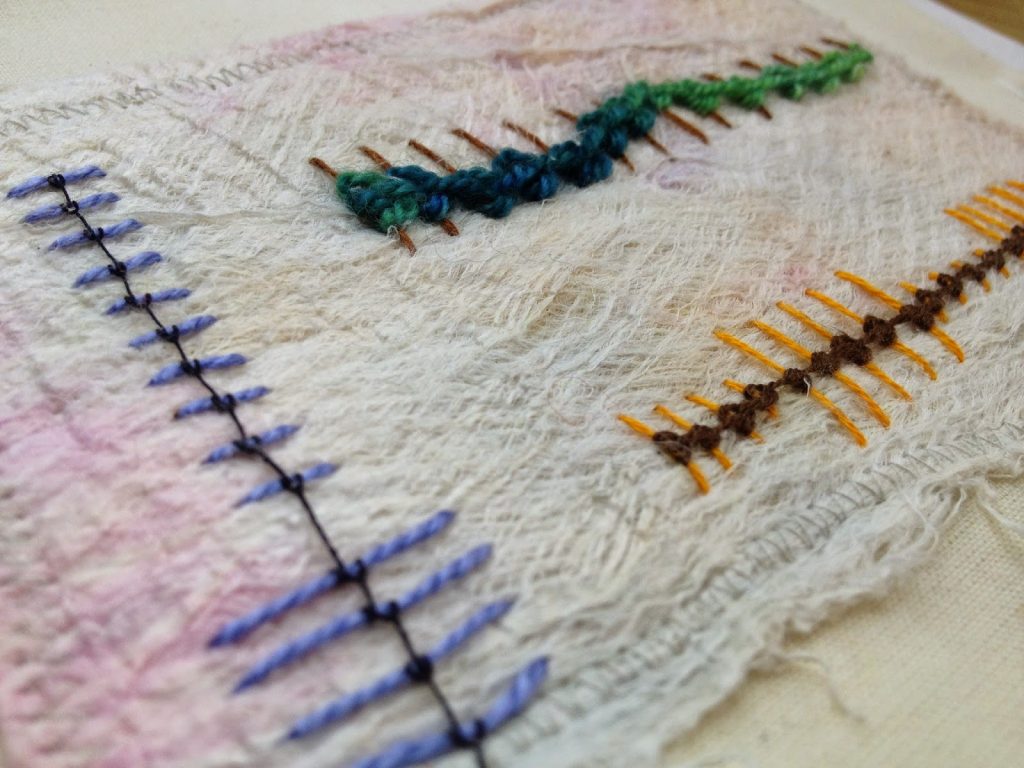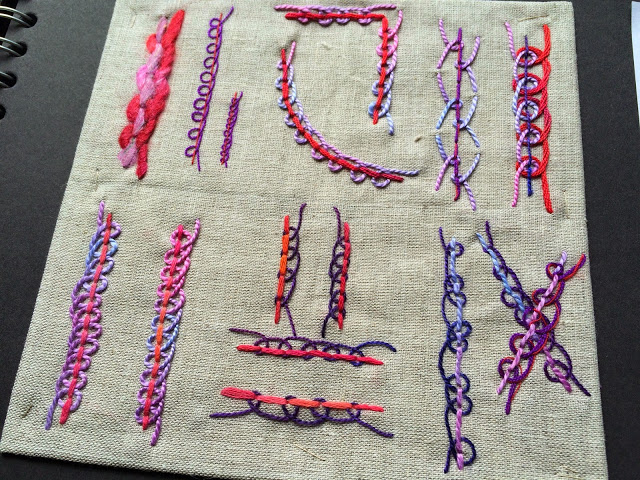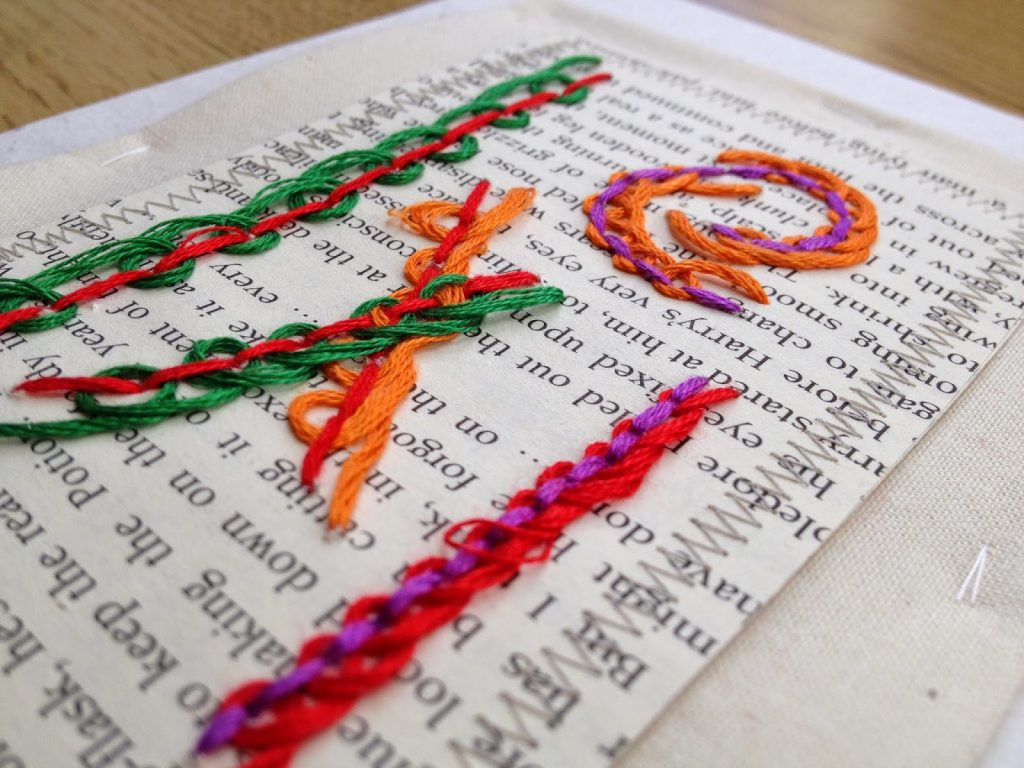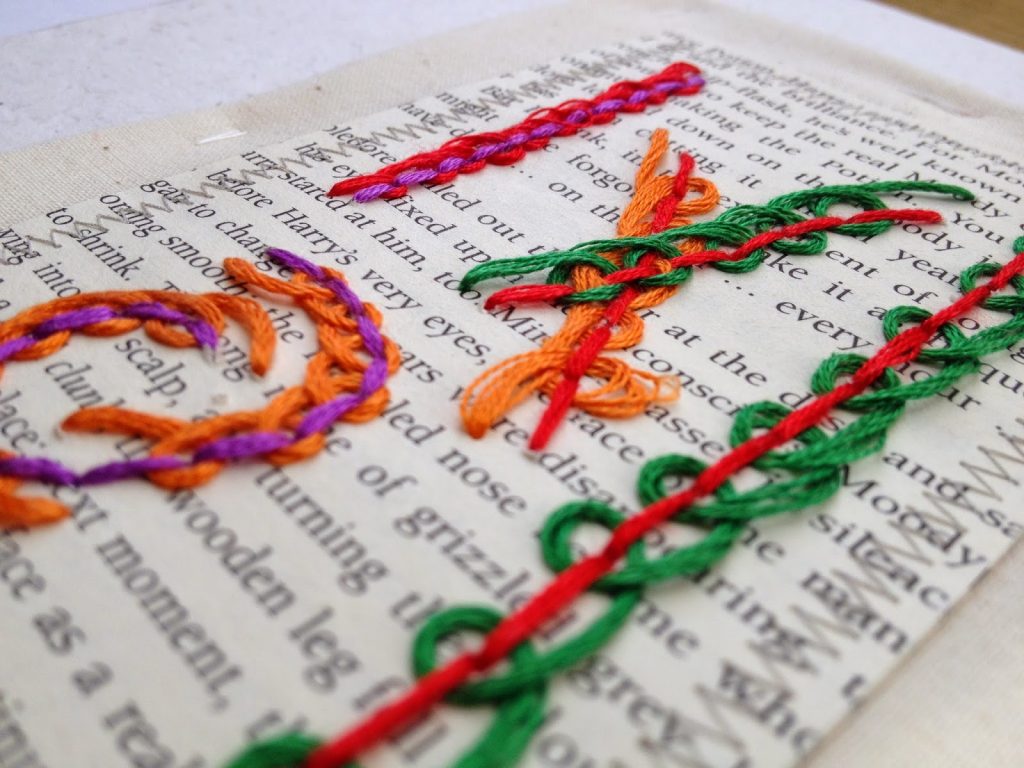I wasn’t sure how I would feel after visiting the homes of the Bloomsbury Group – Inspired? overwhelmed? or maybe even discover that it’s really not my kind of thing. I have been to East Sussex quite a few times this year visiting the stomping ground of this Bohemian circle and have found the experience, artistically, quite liberating.
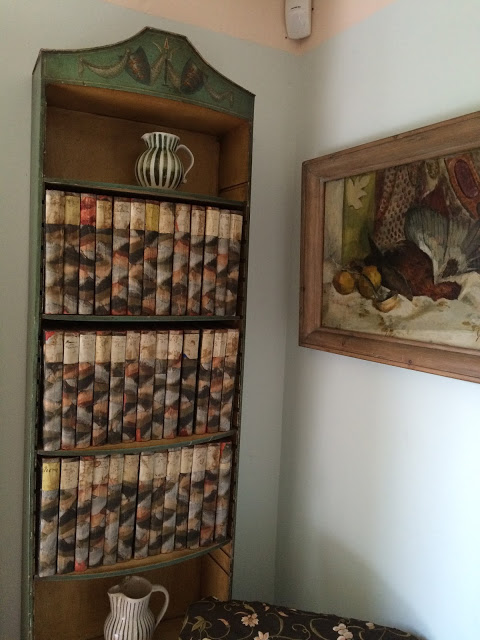 |
| Virginia Woolf’s Bedroom at Monk’s House; Hand decorated paper covered books,; Hand painted furniture. |
My first visit was to Charleston Farmhouse was the home of Vanessa Bell and frequented by artists including Duncan Grant. The interiors are oozing with deign and liberating freedom of expression, found in a multitude of mediums from mosaic, paint, pen and ink and clay. It is a bit of an assault on the senses – anything goes. It is the kind of house we would all like to live in. Just take a paint brush to the walls and furniture and doodle designs to make the house your own. Each and every surface is your canvas. Their creativity spilles over into the garden too. Photography is not allowed in the house (but you can check out this website) so I took lots of photos in the gardens – I must try mosaics.
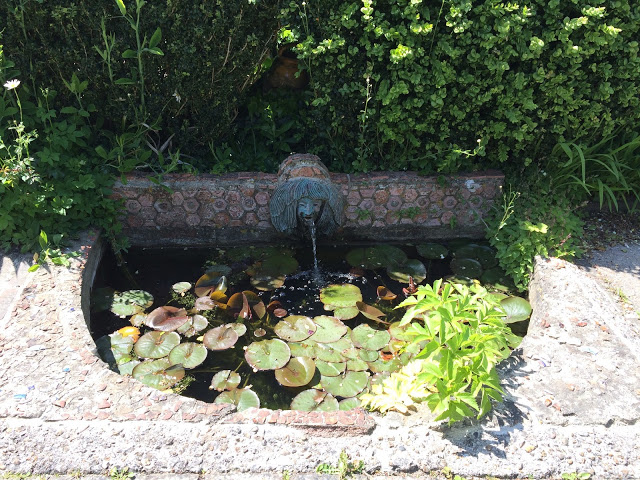 |
| A curved mosaic fountain in the garden with raised seating area |
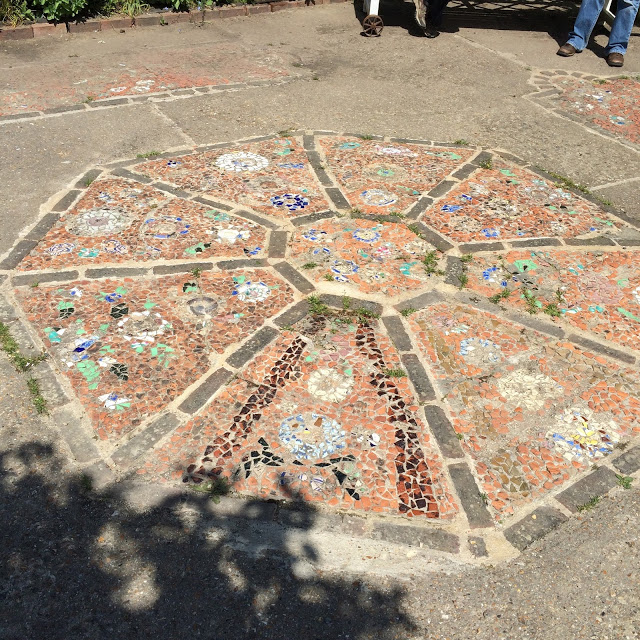 |
| Mosaic patio area |
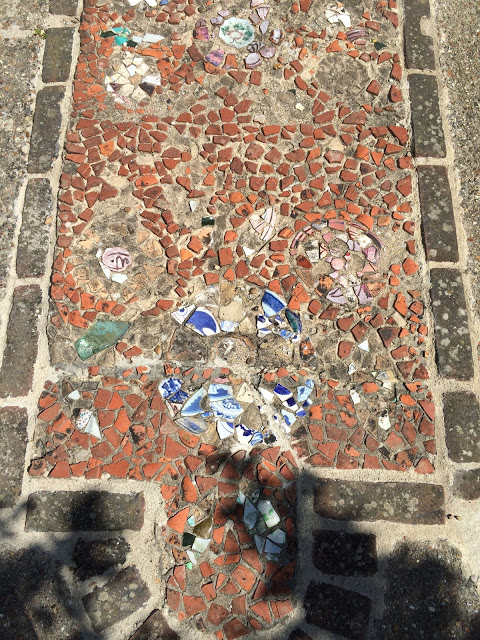 |
| Broken plates from the house soon found a new use in the garden decoration |
On my next trip I visited Sissinghurst Castle, the home of Vita Sackville-West and Harold Nicholson. Although Vita’s love was poetry and gardening, you can see some of the artistic influences in the interiors of the writing tower.
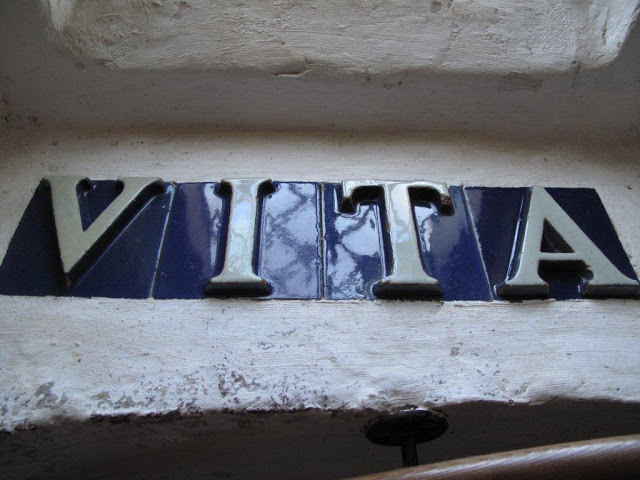 |
| Tiling on a windowsill in the Writing Tower |
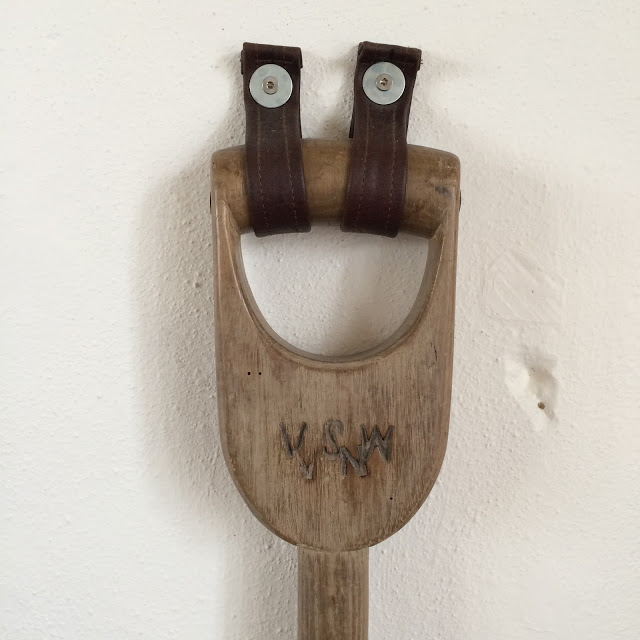 |
| Vita’s monogram on her garden tools |
Later on in the day, we arrived at Monk’s House, the home of Leonard & Virginia Woolf (the sister of Vanessa Bell). This was also a poet’s home and, I thought, a ‘calmer’ version of Charleston Farmhouse. The rooms are painted with a plain colour and are filled full of heavenly furniture and art. The paintings were gifts from fellow artists of the Bloomsbury group, and the painted furniture was bought up by Virginia at one of Vanessa Bell’s exhibitions. Painted tiles tables by Duncan Grant, and paper lampshades, lovingly recreated by Quentin Bell, are in each room. The house has a real feeling of being a lived in home.
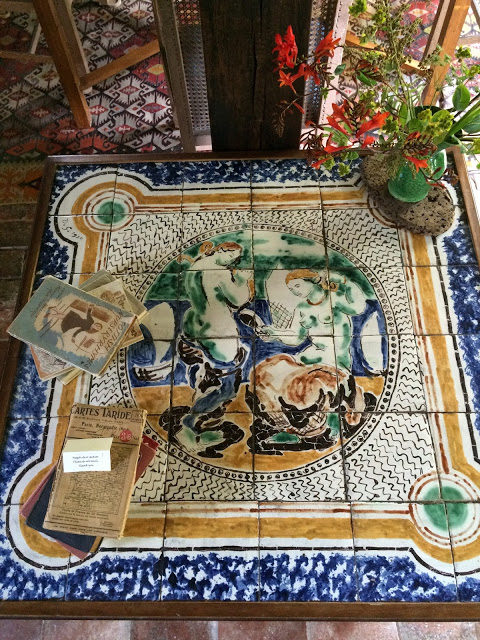 |
| Tiled, hand painted table top by Duncan Grant. |
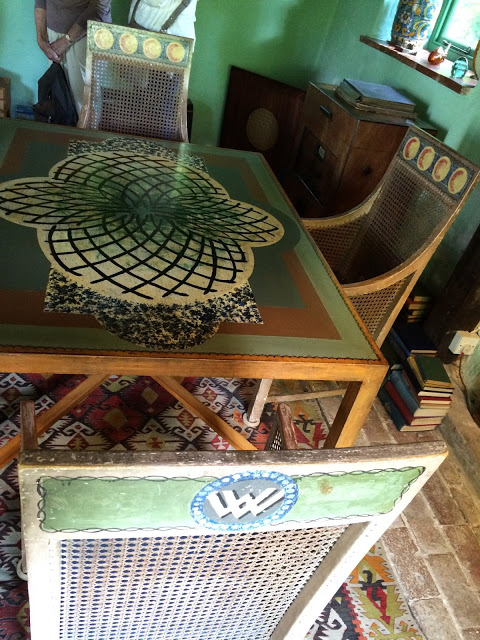 |
| Hand painted furniture by Vanessa Bell and detailed with Virginia’s initials. |
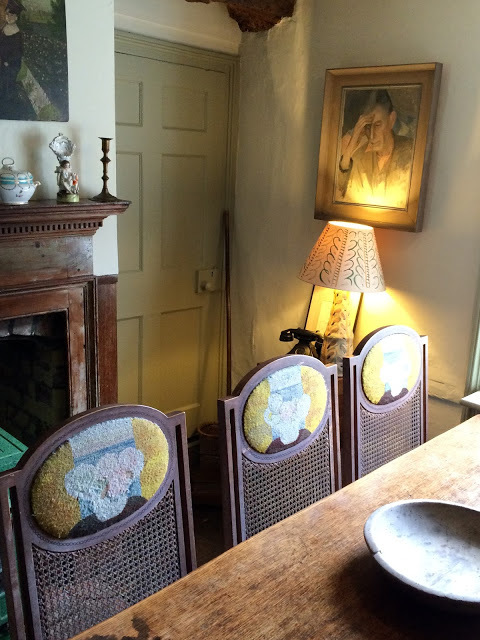 |
| Embroidered chair backs; Hand painted paper lamp shade by Quentin Bell. |
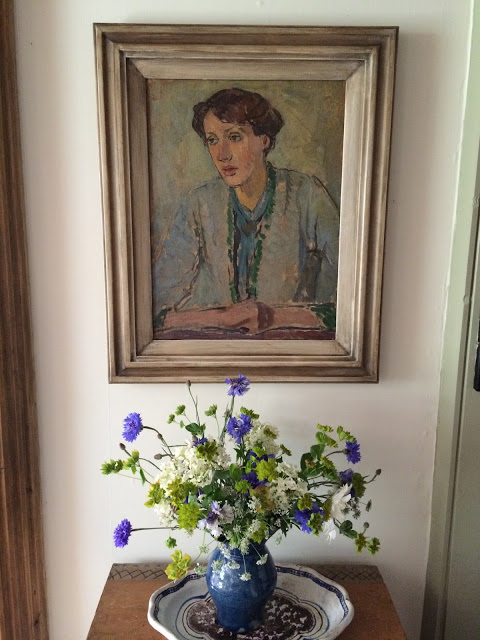 |
| Painting of Virginia above a hand painted piece of furniture. |
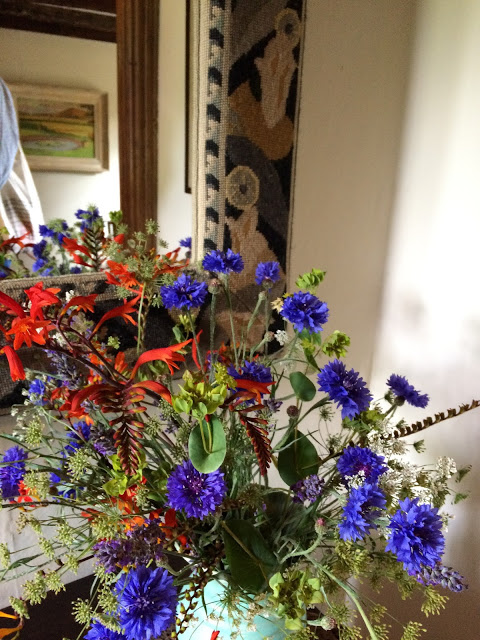 |
| Needlework mirror frame. |
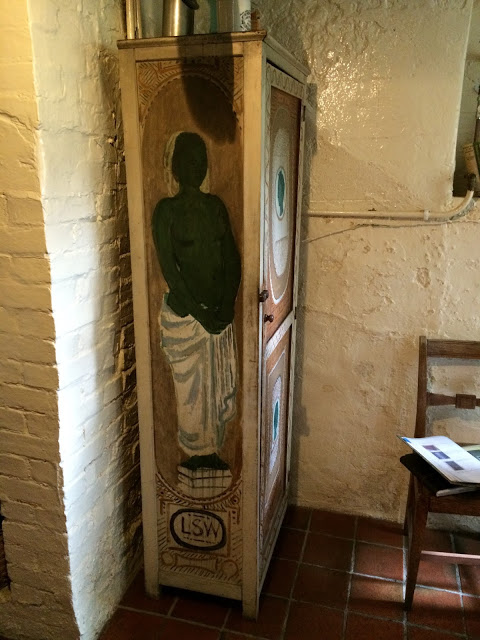 |
| Hand painted kitchen cabinet – LSW (Leonard Sidney Woolf) |
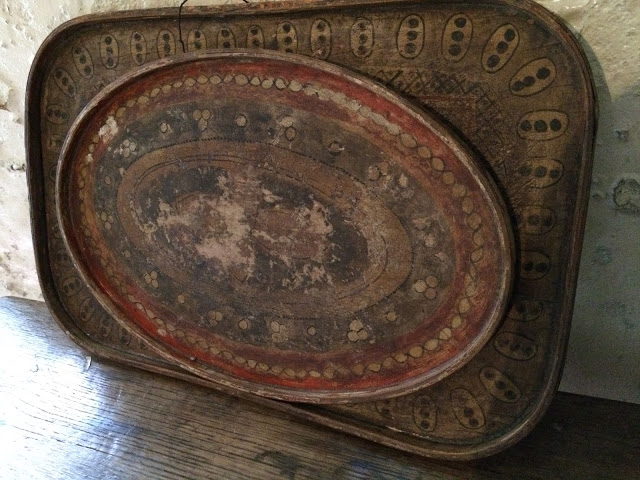 |
| Hand painted tea trays |
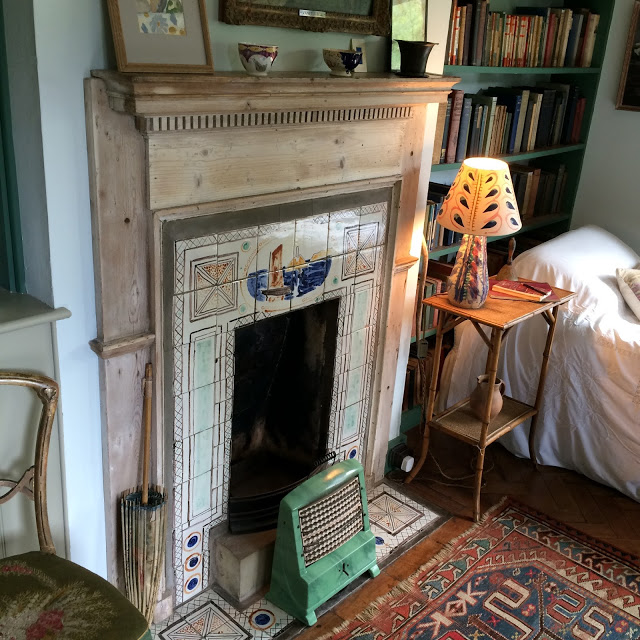 |
In Virginia’s bedroom; hand painted tiled fireplace;
hand painted paper lampshade and handmade ceramic lampbase. |
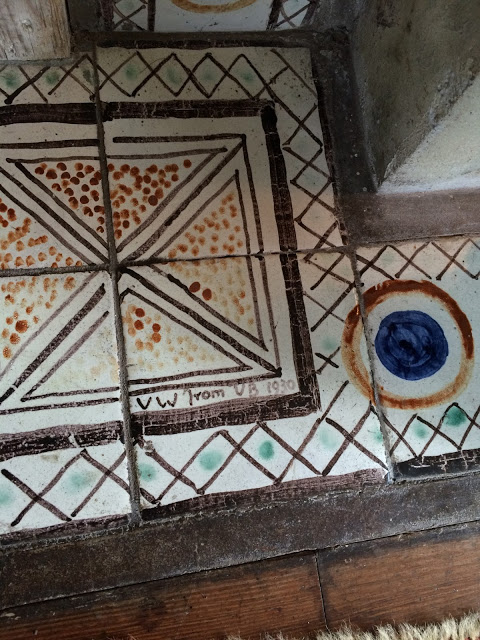 |
In Virginia’s bedroom – detail from the painted fireplace
VW (Virginia Woolf), VB (Vanessa Bell). |
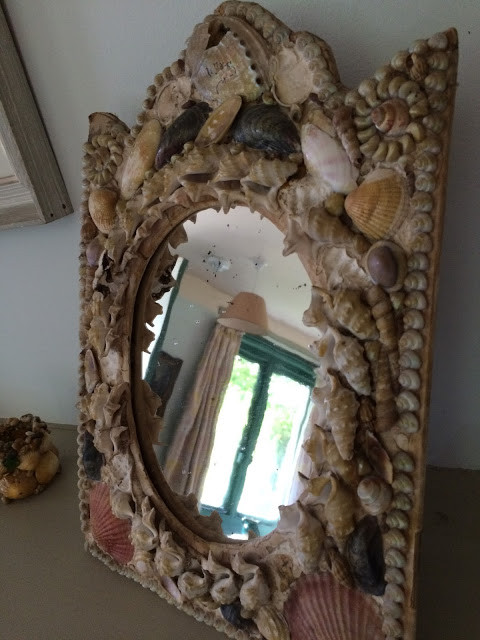 |
| Handmade shell frame |
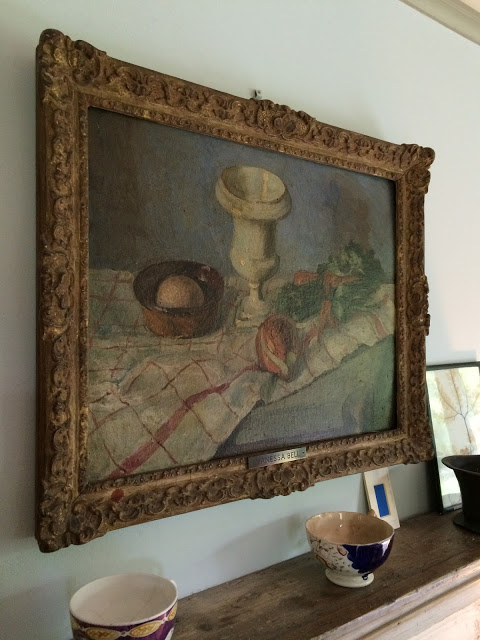 |
| By Vanessa Bell |
If you get a chance to see these properties, please do. The whole liberal lifestyle of the Bloomsbury group was not only expressed in their interwoven relationships but in their art. I have fallen in love with their various forms of expression and have a burning urge to create some mosaics and maybe paint up the dining table!
Now where are my paintbrushes?
…..I hope you have managed to see the BBC series Life in Squares.





